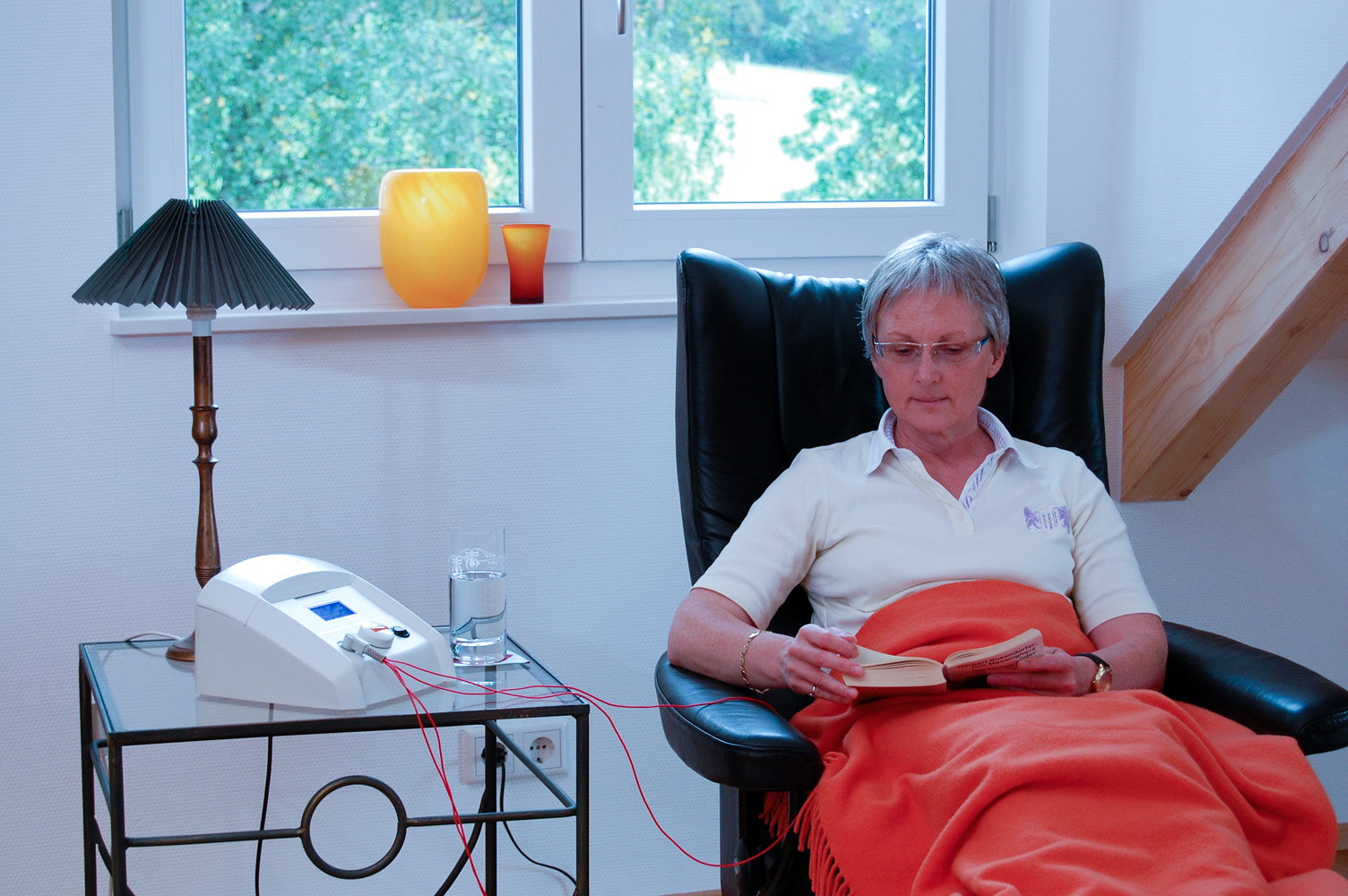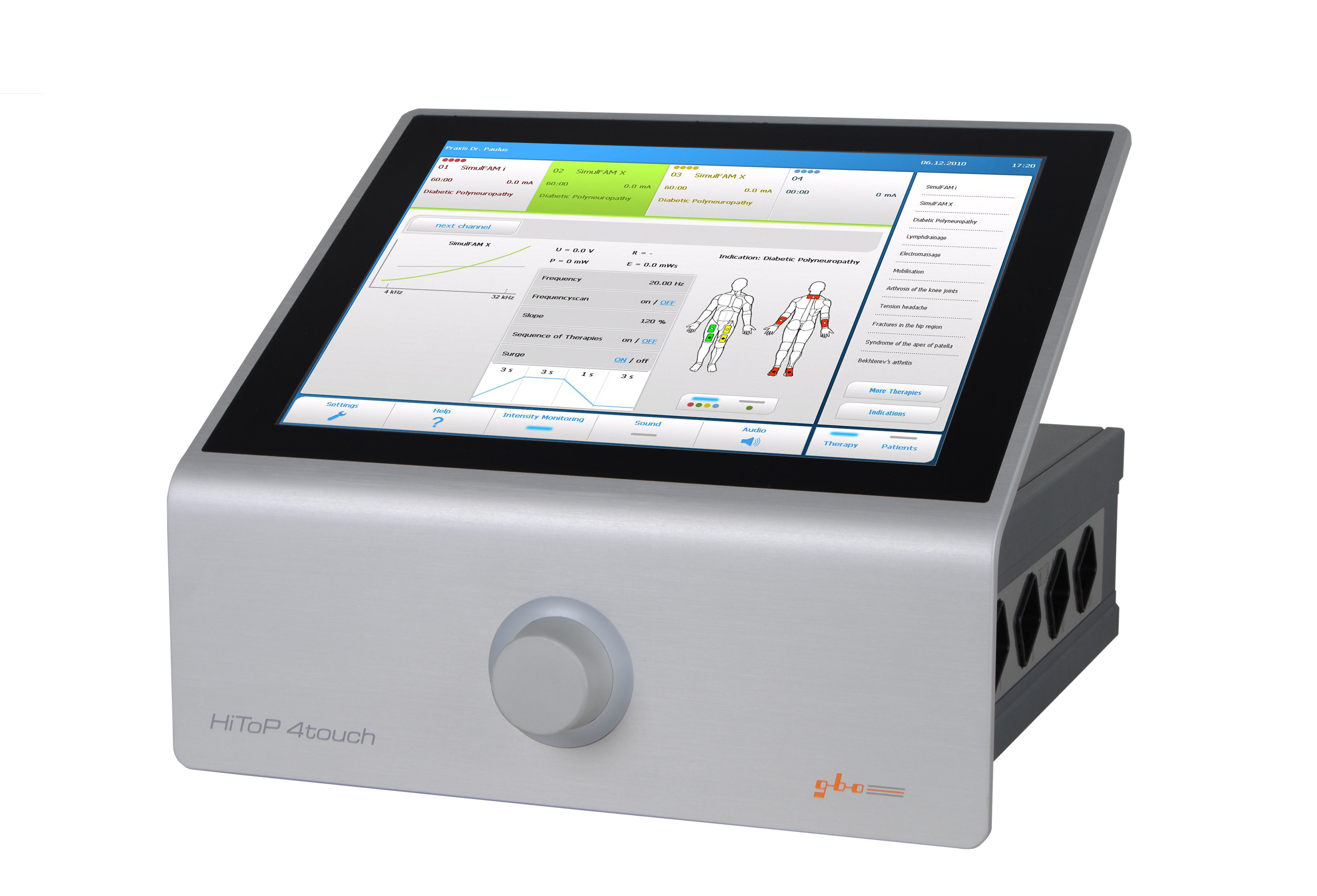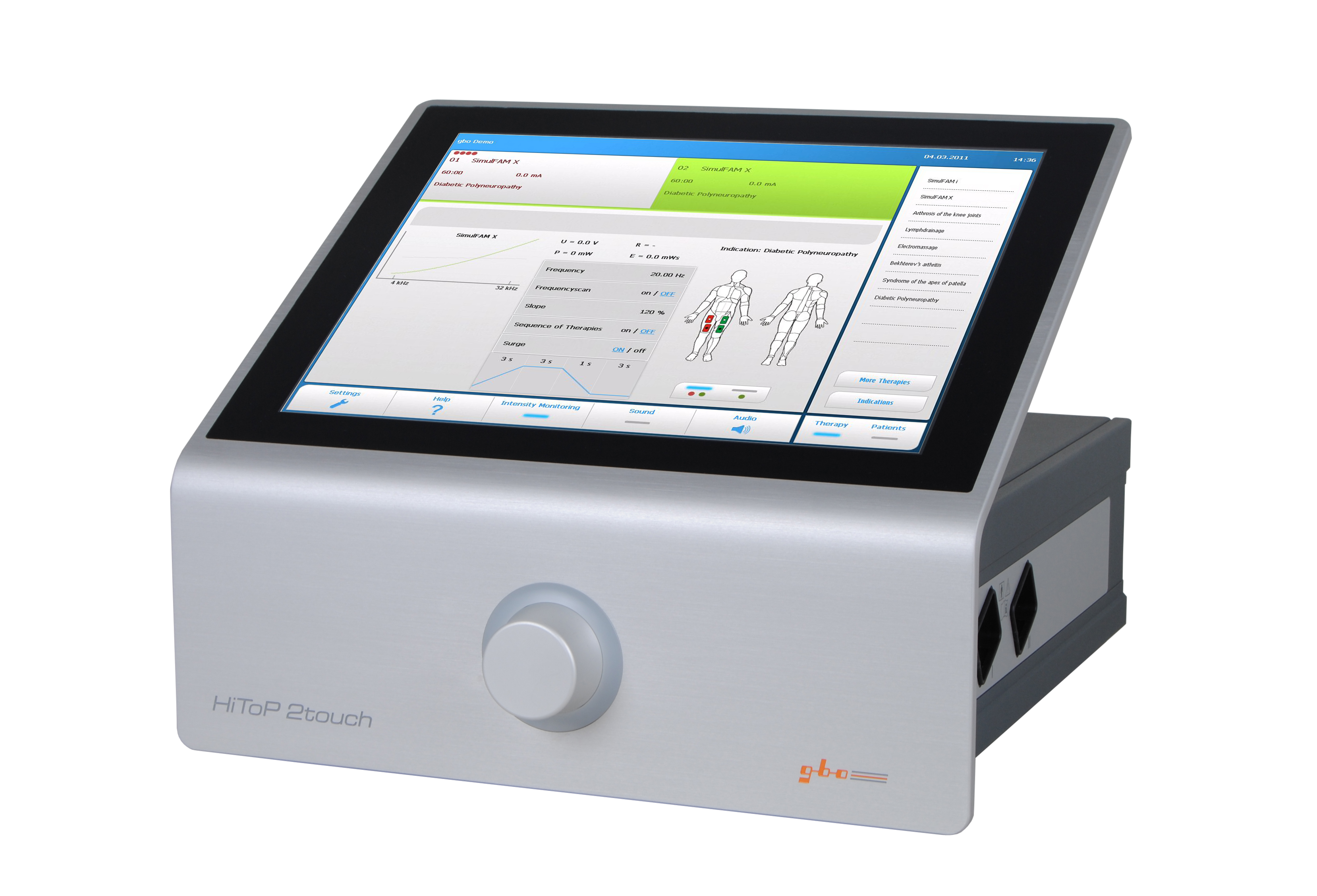High Tone Therapy
High Tone Power therapy is a further development of electrotherapy. Classic electrotherapy - also called stimulation current therapy - stimulates the nerves and muscles. The differences can be seen in the effect, in the technique and in the practical application.
Introduction
Technically speaking, classical electrotherapy is an amplitude modulation: The frequency of the delivered current remains the same while the current intensity is modulated (i.e. varies over time). One works with modulation frequencies between0.10 and 200 hertz in the low-frequency range and mostly with 4,000 hertz in the medium-frequency range. In high-frequency therapy, the amplitude (current intensity) and the frequency are modulated simultaneously. The higher the frequency, the more energy can be introduced according to the individual threshold curve of the patient's current sensation. It is therefore a simultaneous frequency and amplitude modulation. This is always abbreviated as SimulFAM®i in the following. The letter i symbolises the intensity of the coupled power, which increases with increasing frequency. One works in the frequency range between 4,096 and 32,768 hertz with the HiToP® high tone therapy device.
Two other practical differences are:
1. Electrotherapy is applied for 5 to 10 minutes and high tone therapy for up to 60 minutes
2. In stimulation current therapy, one usually works with one channel and two electrodes. In high tone therapy, one works with up to 4 channels simultaneously and with at least 10 electrodes.
HiToP® high-frequency therapy
As early as 1935, Siegfried Koeppen was concerned with the possibilities of using audio frequency therapy. Dr. med. Hans-Ulrich May is recognised as the "father" of today's high-frequency therapy. Since 1988 he has been working with great success with the manifold effective applications.
How are the cell or tissue structures set into oscillation?
The frequency sweep from 4,096 to 32,768 hertz takes place over 3 octaves in 72 quarter-tone steps of 1 second each. The alternating electric field with the high tone frequencies between 4,096 and 32,768 Hertz floods the body and causes all charged parts to vibrate. The frequencies of these supplied oscillations create resonances in the molecules and cell structures. Different frequencies excite structures of different sizes. For this reason, it is important to offer a broad frequency spectrum. Vibrations occur in the tissue, which result in many effects.







